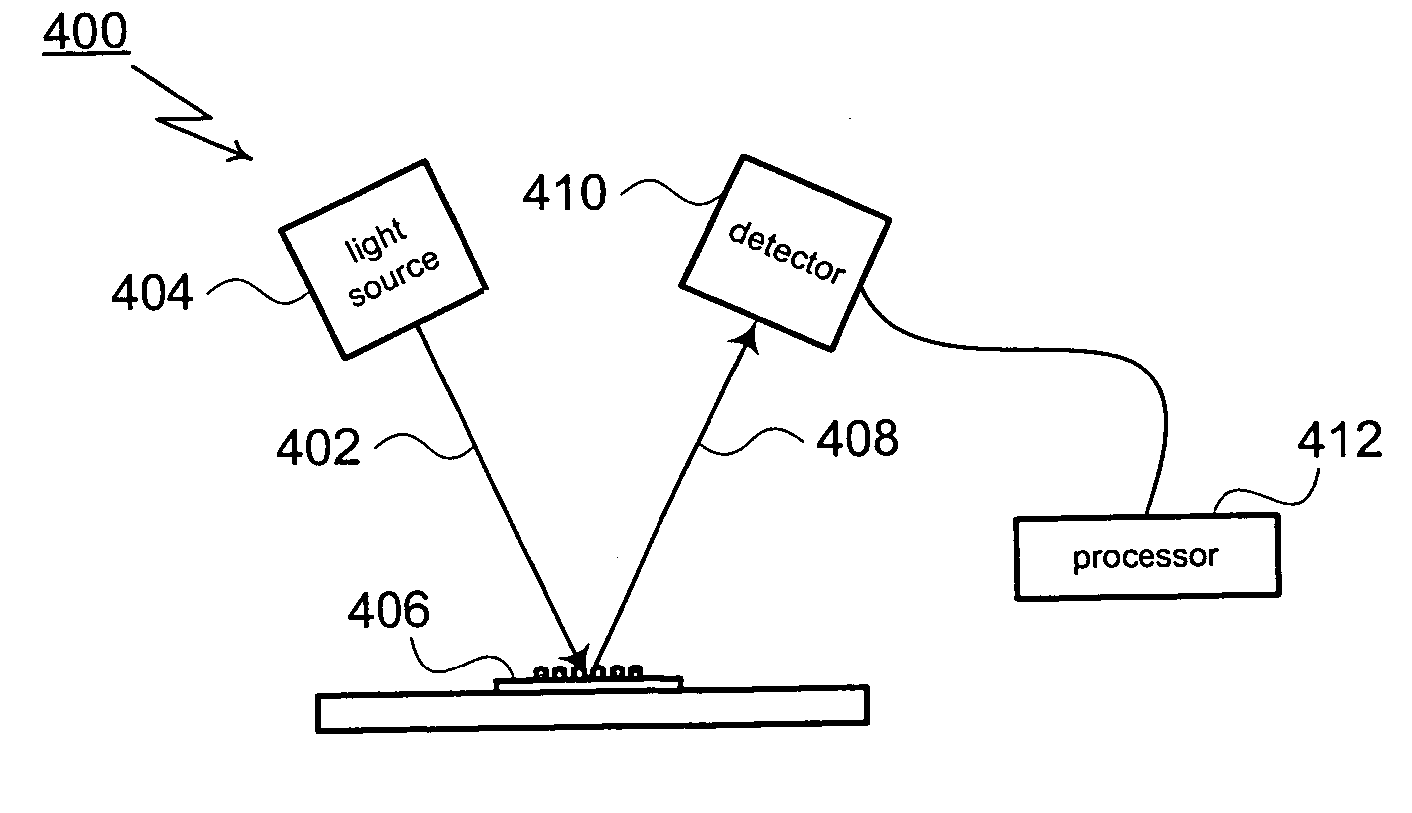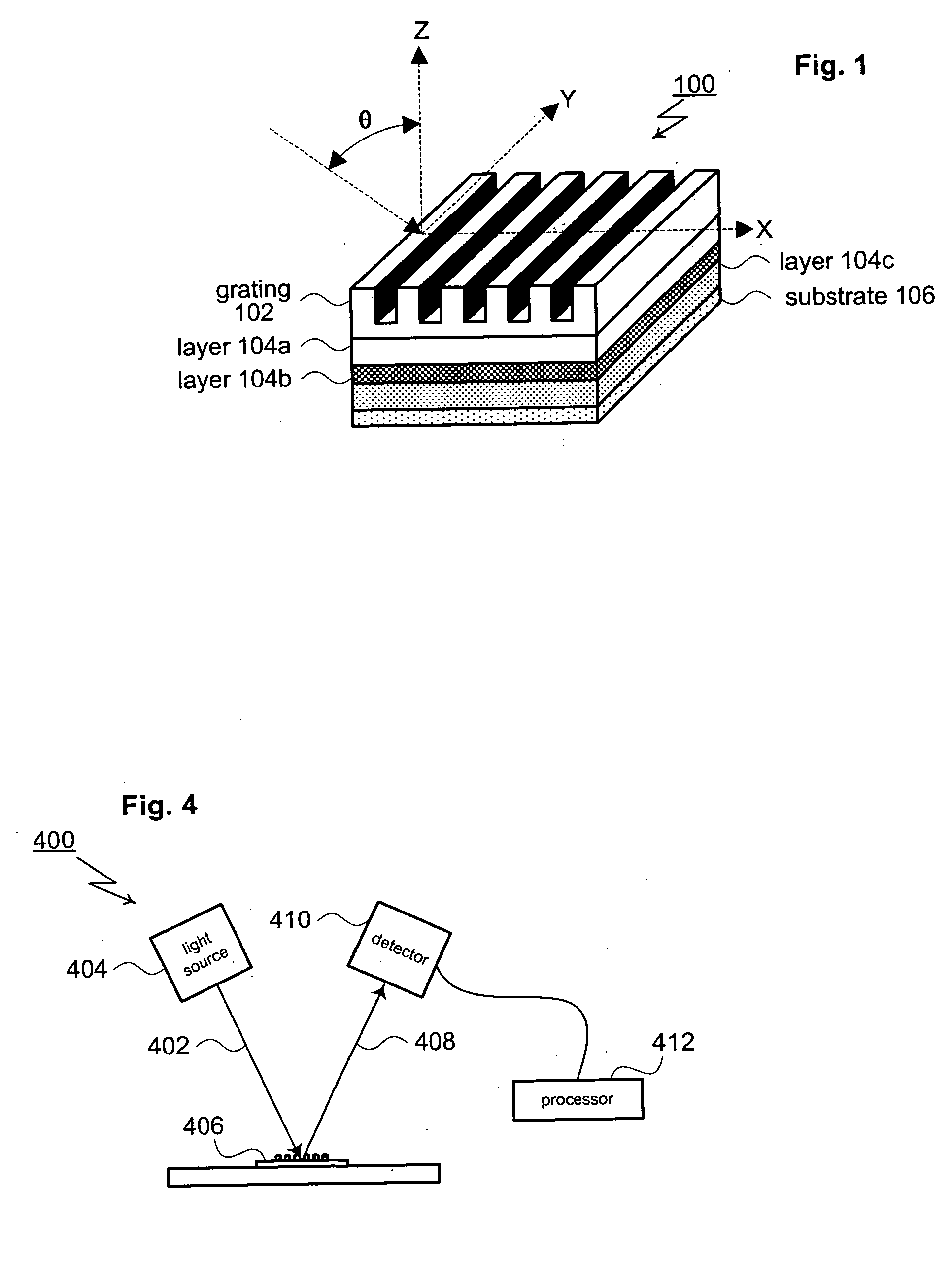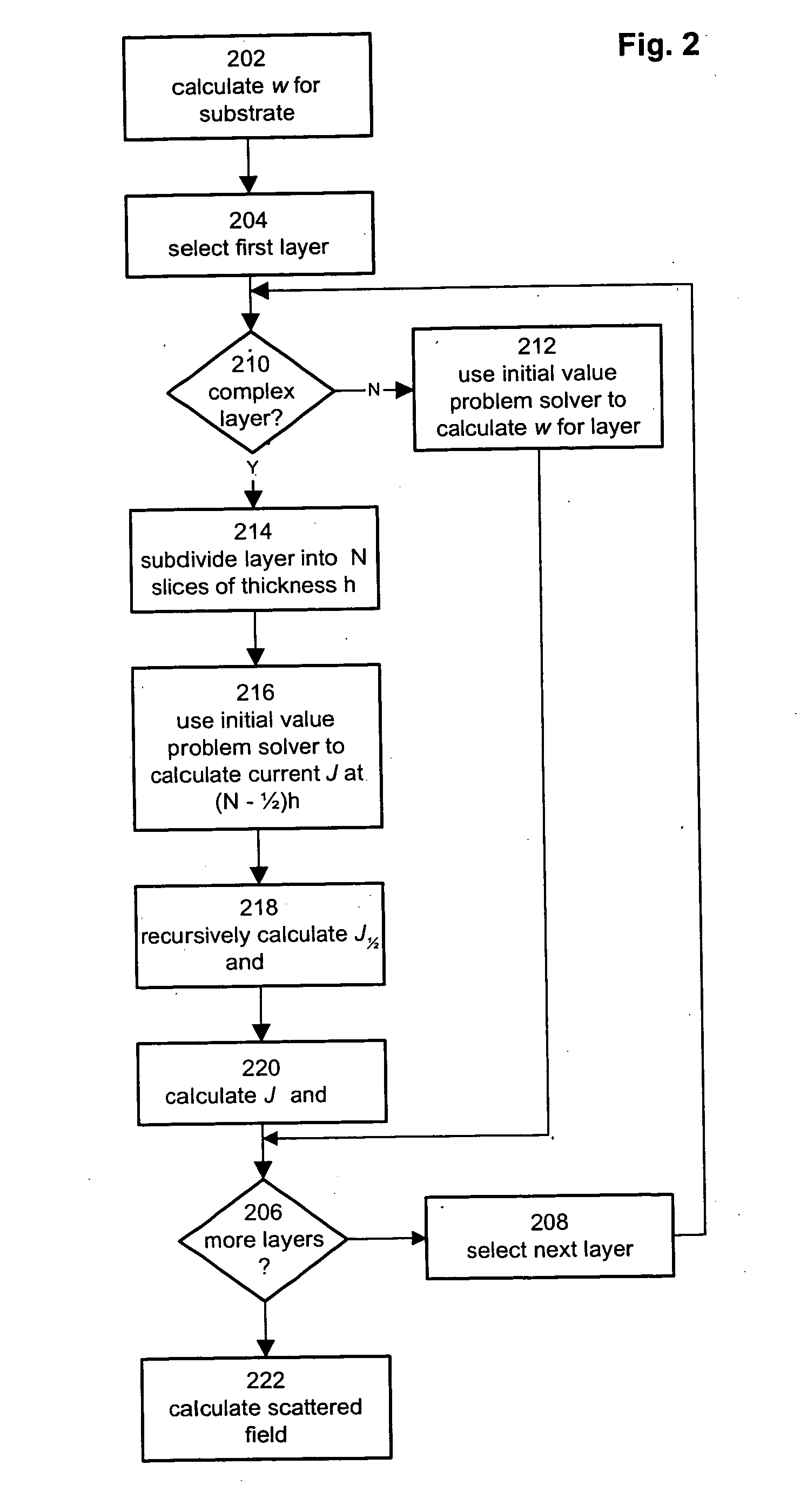CD metrology analysis using a finite difference method
a metrology analysis and finite difference technology, applied in the direction of photomechanical equipment, using wave/particle radiation means, instruments, etc., can solve the problems of rcwa being more than ten times slower, exceedingly slow matrix diagonalization,
- Summary
- Abstract
- Description
- Claims
- Application Information
AI Technical Summary
Benefits of technology
Problems solved by technology
Method used
Image
Examples
Embodiment Construction
Theoretical Foundations
[0023]FIG. 1 shows a generic subject 100 of the type typically analyzed by scatterometry systems. As shown in FIG. 1, the subject 100 includes a surface structure 102. For this particular example, surface structure 102 is a grating formed as a periodic series of lines having a defined profile, width and spacing. The grating is periodic in the X direction and is uniform (exhibits translational symmetry) along the Y axis. In general, surface structure 102 may be formed as a wide range of topologies including isolated or periodic two or three-dimensional structures.
[0024] The subject 100 is covered by an incident medium (not shown) that is typically air but may be vacuum, gas, liquid, or solid (such as an overlaying layer or layers). Below the grating 102, the subject 100 may include one or more layers constructed using one or more different materials. In FIG. 1, the internal layers are labeled 104a through 104c. At the bottom of the internal layers 104, the s...
PUM
| Property | Measurement | Unit |
|---|---|---|
| diffracting structure | aaaaa | aaaaa |
| reflection coefficient | aaaaa | aaaaa |
| field-current ratio | aaaaa | aaaaa |
Abstract
Description
Claims
Application Information
 Login to View More
Login to View More - R&D
- Intellectual Property
- Life Sciences
- Materials
- Tech Scout
- Unparalleled Data Quality
- Higher Quality Content
- 60% Fewer Hallucinations
Browse by: Latest US Patents, China's latest patents, Technical Efficacy Thesaurus, Application Domain, Technology Topic, Popular Technical Reports.
© 2025 PatSnap. All rights reserved.Legal|Privacy policy|Modern Slavery Act Transparency Statement|Sitemap|About US| Contact US: help@patsnap.com



